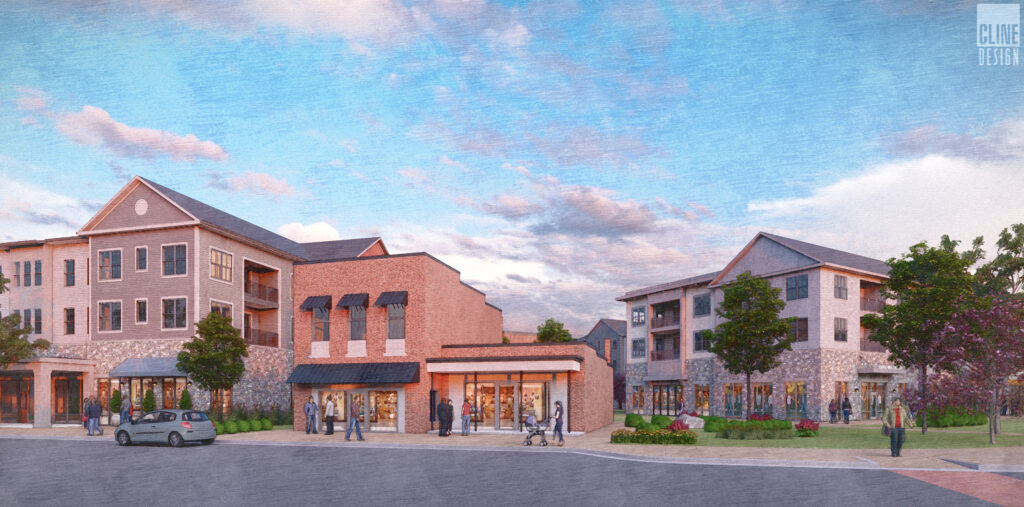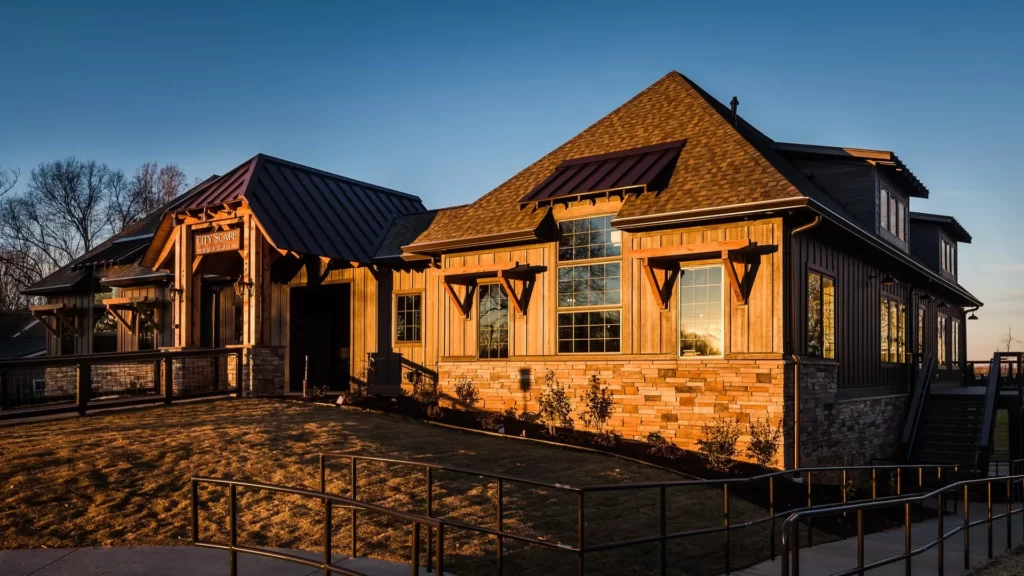RED BANK, SC
William Douglas Management is a leader in customer service — the experience and expertise that your association needs and deserves!
Red Bank is an unincorporated area within Lexington County, South Carolina. The Red Bank area is roughly located in the center of Lexington County. Not to be confused with the “Red Bank,” located in Walterboro, South Carolina. Since Red Bank is an unincorporated area, the United States Census Bureau classifies the area as a “census-designated place” or a “CDP.” The CDP for Red Bank, as defined by the 2010 U.S. Census, has a total area of 11.81 square miles. The population of Red Bank CDP, per the 2010 U.S. Census, was 9,617.
Census-designated places do not have officially filed or specified boundaries other than what has been established by the United States Census Bureau. These census-designated places may or may not be consistent with the traditional or local perception of the area or community defined as the CDP. There are many reasons why a census-designated place is established. However, in most cases, they are established because there is a concentration of population, such as what is found in Red Bank.
~ The Red Bank area is located on South Carolina Hwy 6 South, about three miles south of Lexington, South Carolina.
~ Coordinates/Location of Red Bank – Latitude: 33°55′55″N, Longitude: 81°13′49″W
~ Elevation above sea level: 340 feet.
~ The zip code for Red Bank is 29073, and the telephone area codes are 803 and 839.
The Red Bank area is located within the Columbia Metropolitan Statistical Area (MSA). The Columbia Metropolitan Statistical Area is comprised of six counties: Calhoun, Fairfield, Kershaw, Lexington, Richland, and Saluda. If Red Bank were an incorporated municipality, the 2010 population of 9,617 would make it the 7th largest in the Columbia Metropolitan Statistical Area. The Columbia Metropolitan Statistical Area estimated population, as of 2020, was 847,397. Making the Columbia Metropolitan Statistical Area the second largest MSA in South Carolina, behind the Greenville MSA. The Columbia Metropolitan Statistical Area is the 69th largest based on population in the nation.
Distance to nearby municipalities or areas: Columbia, SC – 16 miles, Lexington, SC – 3 miles, Springdale, SC – 10 miles, Gilbert, SC – 13 miles, West Columbia, SC – 12 miles, Seven Oaks, SC – 14 miles, Irmo, SC – 12 miles, Forest Acres, SC – 19 miles, Cayce, SC – 13 miles, Chapin, SC – 29 miles, Edmund, SC – 6 miles, Lake Murray, SC – 21 miles.
Distance to major cities: Columbia, SC – 16 miles, Charlotte, NC – 106 miles, Atlanta, GA – 202 miles, Jacksonville, FL – 295 miles, Raleigh, NC – 239 miles, Greenville, SC – 109 miles, Charleston, SC – 121 miles, Augusta, GA – 59 miles.
The origin of the name “Red Bank” is not certain, but the most likely origin is the Red Bank Creek that runs through the community. The second origin theory is that the area was named for the hometown of the Red Bank Mill assistant superintendent, Robert Hilton, from Red Bank, New Jersey.
Lexington County was established in 1785. The county was named in honor of the Battle of Lexington in Lexington, Massachusetts, during the American Revolutionary War. Based on the U.S. Census estimate of 2019, the county’s population was 298,750, making Lexington County the sixth-largest county in South Carolina based on population. The county seat of Lexington County is Lexington, which is approximately three miles from Red Bank.

The climate of Red Bank and Lexington County is considered moderate, with four distinct seasons each year. There is an average of 48 inches of rain per year, with an average of two inches of snowfall annually. The average annual measurable precipitation is 104 days.
A Historical Overview of the Red Bank Area
The first historical written record of the area that would become Lexington County came from the expedition of Spanish explorer Hernando de Soto in 1540. This expedition is well documented in the semi-anonymous work of a Gentleman of Elvas, reportedly a Portuguese knight who participated in the expedition. His work was first published in 1557. The Spanish king’s factor (accountant), Luys Hernández de Biedma, issued a report to the king’s court in 1544, which documented the expedition. Hernando de Soto’s secretary, Rodrigo Ranjel, journal of the expedition was partly used as the basis of Gonzalo Fernández de Oviedo y Valdés writing of La historia general y natural de las Indias, which was published in 1851.
In search of treasure and an overland route to China, de Soto’s expedition landed in Florida in 1539 and traveled through Georgia on into South Carolina. The expedition entered South Carolina in search of the Native American Cofitachequi chiefdom. In April of 1540, the expedition arrived at the area of the confluence of the Saluda and Broad rivers, which merged to create the Congaree River. In this area, de Soto came upon a large Native American village on the west side of the Congaree River or one of the tributaries of the Congaree River. It is presumed this was a village of the Native Americans who became known as the Congaree Indians. De Soto and his expedition traveled on from here to the seat of power of the Cofitachequi chiefdom, a town referred to as “Talimeco,” believed to have been close to present-day Camden, South Carolina.
Lexington County was home to the Congaree Indians in the 1600s when other European explorers and traders entered the area. The Congaree Indians lived along the Congaree River and its tributaries. Unlike most other Native American tribes in the region, the Congaree Indian language was not based on the Siouan language. The Congaree Indians were devastated by diseases introduced by Europeans, such as smallpox. By 1700, smallpox had killed the majority of the population.
The English explorer John Lawson in 1701, during his expedition of the Carolina backcountry, encountered the remaining Congaree Indians. Lawson documented this encounter in A New Voyage to Carolina, his writings on the expedition, published in 1709. In his work, he denotes the Congaree as “Congeree.” Quoting his description of the Congaree people from this book, “The Congerees are kind and affable to the English, the Queen being very kind, giving us what Rarities her Cabin afforded…These are a very comely Sort of Indians, there being a strange Difference in the Proportion and Beauty of these Heathens.” Lawson also makes note of the tribe being small because of intertribal disputes and smallpox.
South Carlina colonist and militia Colonel John Barnwell enlisted the Congaree Indians along with around 500 other Native Americans to travel to North Carolina to fight the Tuscarora Indians in the Tuscarora War of 1711. The contingent of around 500 Native Americans, the majority being Yamasee Indians, and 30 white South Carolina colonist officers defeated the Tuscarora. After the Tuscarora signed a peace treaty, the contingent returned home to South Carolina. In 1715, Barnwell documented the population of the surviving Congaree. He established the Congaree totaled 22 men, 70 women, and children, all living in one village.
In the Yamasee War of 1715, the Congaree Indians allied with other Native American tribes against the South Carolina colonist. The following war resulted in half the Congaree Indians being either dead or enslaved. The remaining members of the Congaree people integrated with the Catawba Indians. The Congaree Indians retained their tribal customs among the Catawba people until the late 18th century. The Congaree Indians became extinct as a separate tribe when their descendants intermarried with the Catawba tribe members.
The early settlers to Lexington County were German-speaking Swiss and German Lutherans, beginning to arrive around the 1720s. The immigration, primarily being Swiss, and Germans continued through the 1750s. Scots-Irish immigrants began arriving around the 1750s in larger numbers. These early settlers to the future Lexington County, for the most part, had small farms and were subsistence farmers.

The conclusion and aftermath of the American Revolution brought a great deal of change to the region. Lexington County was formed in 1785. A town called Granby, which was located within present-day Cayce, South Carolina, was the population center of that time and became the county seat. Lexington County’s first courthouse was in Granby. Because of continued flooding in Granby due to cotton cultivation upriver, the county seat and courthouse were moved to a new settlement known as “Lexington Courthouse” in 1820.
The invention of the cotton gin by Eli Whitney in 1793 made the cultivation of short-staple cotton economically feasible for farmers in the region. Cotton cultivation allowed many farmers to transition from subsistence farming, resulting in many of the small farms becoming large farms.
Red Bank remained primarily a rural area while the nearby towns and cities developed during the 1800s. Before the Civil War, the area became known as a health resort. Dr. Frederick W. Green constructed a “mosquito cottage,” which was used to escape malaria that plagued the region.
Green built the Red Bank Mill, a textile mill, reportedly the first business or industry in the area besides farming. This was also reportedly the first textile mill built in Lexington County. The textile mill was constructed in 1869 on Red Bank Creek. The Red Bank Mill burned down around 1893. A new textile mill, Saxe-Gotha, was built on the site in 1895. The new mill was just over 31,000 square feet, with large windows and walls made of local granite and sandstone. This mill had a capacity of 5,000 spindles, and 225 looms that would manufacture sheet and shirt fabric.
Red Bank remained primarily rural through most of the 20th century. In the latter part of the 20th century, as Lexington and Columbia began to grow in population, this population spread out into the Red Bank area. In 1970, Lexington received $165,000 from Housing and Urban Development to extend their municipal waterlines in Red Bank. The Red Bank CDP included 4,137 households in the 2010 U.S. Census.
Interesting Points or Events about Red Bank
-On June 28, 1994, the Red Bank mill pond dam collapsed. Heavy rains resulted in a swollen pond that caused a 40-foot section of the earthen dam to give way. The dam contained a 25-acre lake and was twenty feet high. This dam failure contributed to the Crystal Lake dam and the Durham pond dam failure as well. The resulting flooding closed South Carolina Highway 6 and other local roads for several days.
Copyright © 2021 William Douglas Management, Inc.
Need Association Management?
Contact Us
How to Start
The Process of Working With Us


REQUEST A PROPOSAL
Request a proposal online or call us directly.


WE WILL REVIEW YOUR CASE
Our team of highly trained professionals will review your case.


RECEIVE A CUSTOM TAILORED PLAN
We will create a customized management plan for your community.


SEAMLESS TRANSITION
We will implement a seamless management transition and integrate our tech.


SIT BACK & RELAX
Enjoy better, affordable and a more reliable, hassle-free management system.




